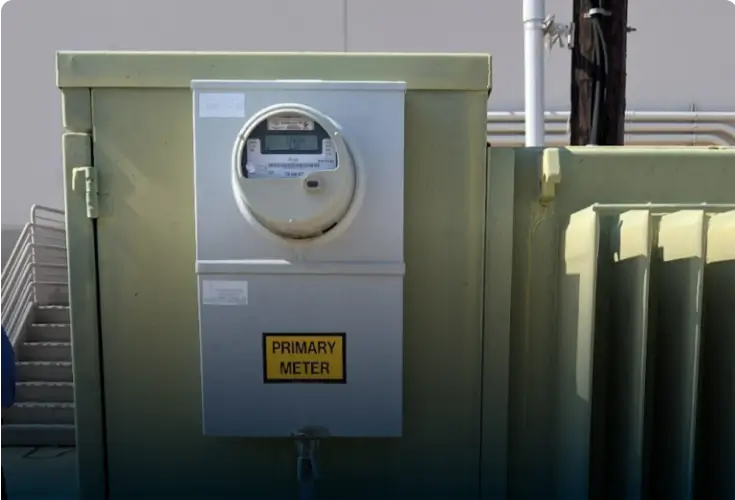Content
Enertiv is a data and analytics company focused on streamlining building operations to eliminate wasted expenses and improve tenant comfort. Recently, the company raised $4.3 million in a round of funding, from investors like Fifth Wall and Rudin Ventures, to accelerate technology development and growth of installations around the country.
Connell McGill and Pavel Khodorkovskiy founded the company seven years ago to bring equipment-level energy data to real estate owners and operators. Since then, the company has built solutions to transform this data into asset value such as predictive maintenance, equipment-level benchmarking, automatic optimization insights, and tenant submetering, and by incorporating additional IoT sensors for leak detection and indoor air quality. This has led to an average 10–15% reduction in operating expenses related to maintenance, utilities, and equipment reserves.
Enertiv’s main goal is to make life easier for owners and operators, whether it’s catching equipment failures before tenants notice, automating tenant submeter billing, or using data to drive capital investment decisions. Its building performance solutions have been deployed across the country in multifamily, office, hospitality and industrial portfolios.“What impressed us about Enertiv was its ability to unlock large savings in buildings that have historically lacked robust operations performance capabilities,” said Fifth Wall’s Adam Demuyakor. “With potential payback periods of less than a year, the firm’s product offerings for multifamily and office landlords are very attractive.”
Because of the cost to deploy, the majority of buildings do not have traditional building management systems driven by sensors to control HVAC and lighting systems. Enertiv deploys circuit-level sensors to affordably bring 200-500 pieces of equipment online per building and begins identifying money-saving insights within weeks of installation.
Even buildings with extensive sensor networks often have blind spots in critical pieces of equipment such as exhaust fans, elevators, and cogeneration units. This is a major reason that the Rudin family, an LP of Fifth Wall, also invested in Enertiv.
“We were really impressed by [them] and think they have built and grown a really great company with a great product,” said Michael Rudin, a senior vice president of Rudin Management. “There are obviously a lot of buildings that are the right fit for what Enertiv is doing and that’s why we found it to be attractive.”
While there are other companies that track electrical demand in buildings and equipment, Enertiv remains head of the class because it uses the data to streamline building operations comprehensively, instead of adding another siloed service to the tech stack.
Building operators and engineers are constantly on-the-go. Visualizing system data in a dashboard does not provide the context required to make the data actionable. Even identifying data anomalies is not sufficient to move the needle in terms of total operating expenses. Enertiv has mapped expert operator knowledge onto data anomalies to build the largest library of equipment-level insights in the world.
Enertiv’s other strength is its approach to client success. Because this type of granular building data has never been available, Enertiv combines data analytics with a human touch to ensure that activities are appropriately prioritized. Rather than inundating customers with alerts, optimizations, and retrofit recommendations, Enertiv’s building system engineers quantify the investment and impact of a wide range of actions with a focus on the existing problems in the portfolio.
For real estate companies worried about the disruptions caused to staff and tenants during installations of new hardware, Enertiv has made the process as quick and discreet as possible. The full implementation process takes only one or two days, requires no power shutdowns, and leverages a dedicated 3G/4G cellular gateway to avoid waiting on IT teams.
Looking ahead, Enertiv is working to integrate a wide range of IoT sensors to further digitize the physical infrastructure in commercial real estate. From leak and flood detection sensors to avoid costly damages to indoor air quality sensors to monitor office spaces for cognitive-debilitating, layering low-cost sensors onto the Enertiv’s equipment-level insights can further drive cost reductions and help maximize tenant comfort.
Finally, the company is leveraging Fifth Wall, the Rudin family, and their other strategic investors to intimately understand not only where the market is today, but where it is going. The lessons learned from deployments in portfolios such as Related Companies and Colliers International have fed machine learning algorithms, making the system continuously smarter and more valuable.
“Our value is reducing operating expenses. This is especially important as more real estate companies prepare for a market downturn in the near future.” Said Enertiv’s CEO, Connell McGill, “the job of building operators and engineers have been very difficult because they are essentially flying blind. Enertiv not only provides the visibility but delivers actionable insights to dramatically improve how well buildings are operated.”
Want to slash your operating expenses? Get a free ROI analysis from Enertiv today!
CASE STUDY
Top 10 Global Asset Management Firm deploys Enertiv to get 100% utility data coverage across 100+ industrial sites
Light at the end of the tunnel
If you’ve made it this far, you’ve likely realized that implementing a utility data collection system in-house involves much more than installing meters and connecting APIs.
Yes, it’s possible to build it from scratch.
But it takes time, resources, and a learning curve that’s hard to fully anticipate.
Unless this is your core business, you’ll likely spend years learning lessons we’ve already paid for — through failed installs, messy integrations, and countless conversations with teams with real-world demands.
What may seem like a straightforward checklist today was, for us, a long path marked by challenges and meaningful breakthroughs.
Today’s sustainability leadership depends on speed and data precision. If you’re serious about hitting decarbonization targets, every delay in collecting accurate utility data is a missed opportunity.
That’s why going through this entire build process internally can actively slow your energy transition.
You don’t need to start from zero to reach net zero. You just need to avoid the mistakes that stall everyone else.





%20consider.webp)
